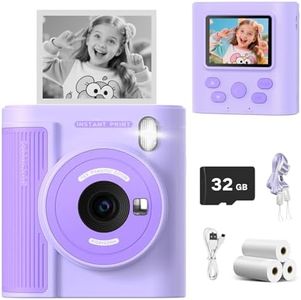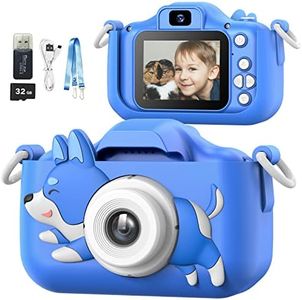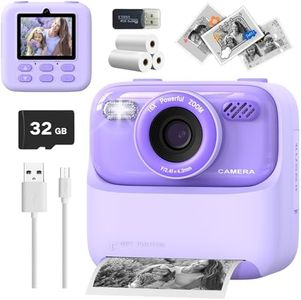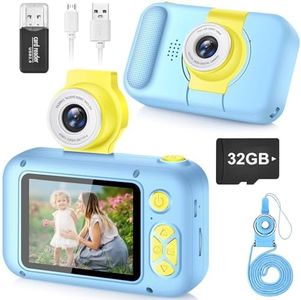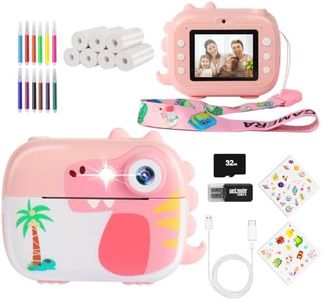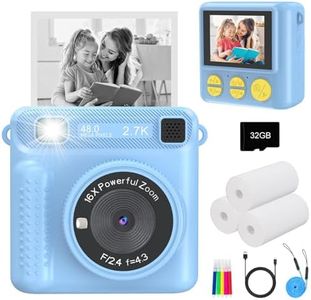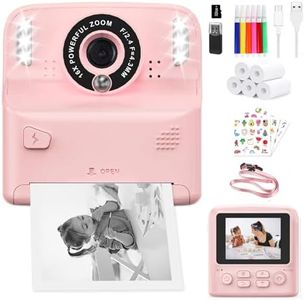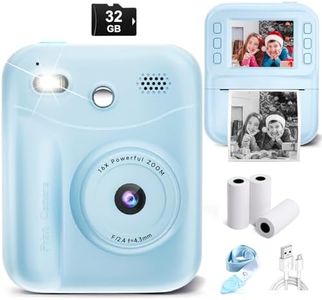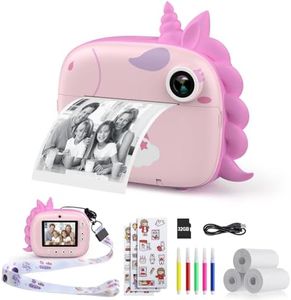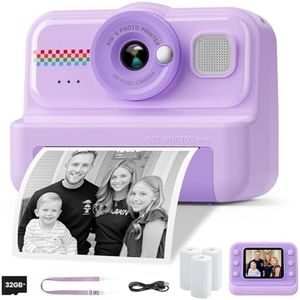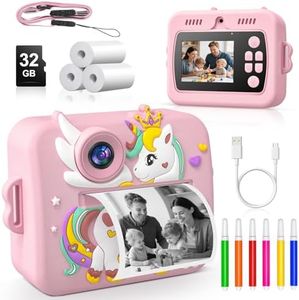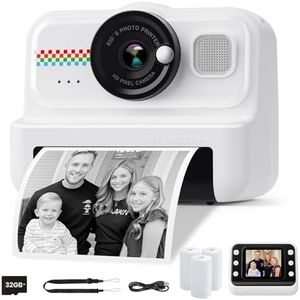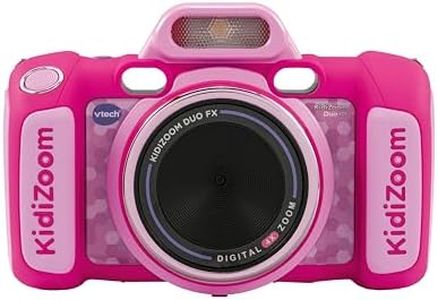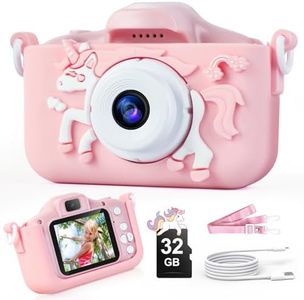We Use CookiesWe use cookies to enhance the security, performance,
functionality and for analytical and promotional activities. By continuing to browse this site you
are agreeing to our privacy policy
10 Best Kids Digital Cameras
From leading brands and best sellers available on the web.Buying Guide for the Best Kids Digital Cameras
Choosing the right kids' digital camera can turn a simple gadget into the spark for a lifelong hobby or just a fun companion on family adventures. When buying for children, it’s not just about how good the photos are, but also how enjoyable, durable, and easy to use the camera is. Take your child's age, interests, and how they’ll use the camera into account to find the perfect match that balances fun, safety, and simplicity.DurabilityDurability refers to how well the camera can withstand drops, bumps, and general rough handling. Kids are naturally prone to accidents, so cameras designed for children usually have rugged, shockproof bodies. Some are water-resistant as well, which is great for outdoor play. For younger kids or those who are lively and adventurous, opt for extra toughness. For older, more responsible kids, a less rugged design may be okay if it’s lighter or more compact.
Ease of UseEase of use is all about how simple and intuitive the camera controls are. Cameras for young children should feature large buttons, clear menus, and minimal settings, helping them learn quickly without frustration. Older kids may enjoy more settings to experiment, like filters or simple editing. Choose a camera that matches the comfort and attention span of your child—if they’re very young, keep it basic, while older children might love a bit more complexity if they’re interested in photography.
Image Quality (Megapixels)Image quality, often measured in megapixels, determines how clear and detailed the photos will be. For kids' use, a camera doesn’t need very high megapixels; around 5 to 8 megapixels is usually enough for clear images and small prints. If your child is older and enjoys printing photos or showing them on large screens, a slightly higher megapixel count may be useful. Remember, higher isn’t always better if it complicates things or makes files too big for the camera’s memory.
Battery LifeBattery life determines how long the camera can work before needing a recharge or fresh batteries. Long battery life is important, especially for trips or events, so kids don’t get disappointed by a dead camera during play. Some cameras use normal AA or AAA batteries, while others have built-in rechargeable batteries. Consider how often the camera will be used and whether you want the convenience of recharging or the flexibility to swap batteries on the go.
Size and WeightSize and weight refer to how big and heavy the camera is. Kids’ hands are small, so a lightweight, compact camera is much easier for them to hold and carry. Bulky cameras may be tough to grip, leading to drops or less enjoyment. Choose a camera that fits comfortably in your child’s hands—toddlers will need especially small and light models, while older children can handle slightly larger cameras if they’re more advanced.
Parental Controls and Safety FeaturesParental controls and safety features make sure your child uses the camera safely and age-appropriately. Some cameras have features to block sharing, limit access to photo galleries, or restrict games and extra apps. For younger kids, cameras with basic operation and no internet features are best. Older children may need fewer restrictions but can still benefit from features that help keep their usage safe and supervised.
Fun FeaturesFun features include things like frames, filters, games, and special effects that make taking photos more playful and creative for kids. These extras keep kids engaged and help them learn more about photography in a relaxed way. Younger kids often love colorful stamps or sound effects, while older kids might enjoy experimenting with filters or collages. Match the fun features to your child’s interests and attention span to make the camera an inviting toy and learning tool.
